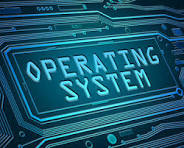
UNIT 1: Introduction to Operating Systems
- Overview of OS: Definition, Objectives, Types (Batch, Multi-programming, Time-sharing, Real-time, Distributed)
- OS Components: Kernel, Shell, System Calls
- OS Services: Process Management, Memory Management, File System, Security
- System Structures: Monolithic, Microkernel, Layered, Hybrid OS
- Virtual Machines & System Boot Process
UNIT 2: Process Management & Scheduling
- Processes & Threads: Process States, PCB, Process Creation & Termination
- CPU Scheduling: Scheduling Criteria, Preemptive & Non-Preemptive Scheduling
- Scheduling Algorithms: FCFS, SJF, Round Robin, Priority Scheduling, Multilevel Queue
- Interprocess Communication (IPC): Shared Memory, Message Passing
- Threading Models: Single vs. Multithreading, PThreads, Kernel vs. User Threads
UNIT 3: Synchronization & Deadlocks
- Process Synchronization: Critical Section, Race Conditions, Synchronization Mechanisms
- Classical Synchronization Problems: Producer-Consumer, Reader-Writer, Dining Philosophers
- Synchronization Tools: Semaphores, Mutex, Monitors
- Deadlocks: Characterization, Deadlock Prevention, Avoidance (Banker’s Algorithm), Detection, Recovery
UNIT 4: Memory & Storage Management
- Memory Management: Contiguous & Non-Contiguous Allocation, Paging, Segmentation
- Virtual Memory: Demand Paging, Page Replacement Algorithms (FIFO, LRU, Optimal), Thrashing
- File System Management: File Attributes, File Access Methods, Directory Structures, File Allocation Methods (Contiguous, Linked, Indexed)
- Disk Scheduling: FCFS, SSTF, SCAN, C-SCAN, LOOK, C-LOOK
UNIT 5: Security, Protection, and Advanced Topics
- Security & Protection: Authentication, Authorization, Encryption, Access Control Lists (ACLs)
- OS Protection Mechanisms: User Privileges, Firewalls, Intrusion Detection
- Distributed & Cloud OS: Concepts, Challenges, Virtualization, Containers (Docker, Kubernetes)
- Case Studies: UNIX, Linux, Windows OS, Android OS
- Teacher: Admin User
